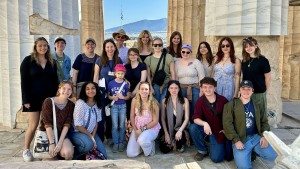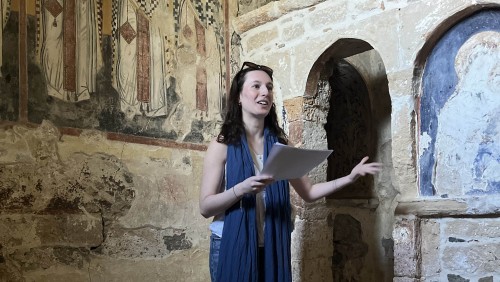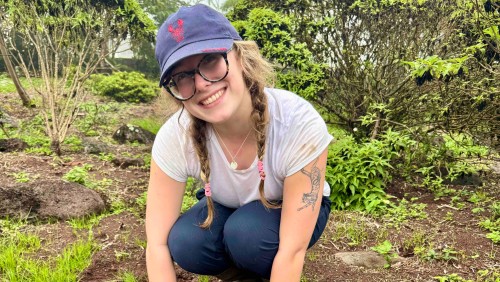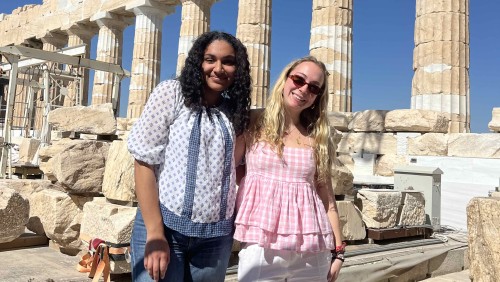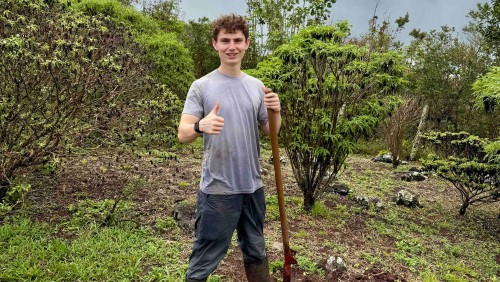Atop the Acropolis, with sprawling Athens spreading backwards toward the hills, the students of Zoë Kontes’ “Greek Archaeology” course squeezed past the barrier ropes and wound their way up the marble steps under the east pediment of the Parthenon. They entered the muffled hush of the interior of the temple — something very few visitors ever get to do — and experienced firsthand the scale, the interplay of sun and wind, the gleaming whiteness of the marble. As Kontes asserts, “You cannot overestimate the impact of seeing this material in person.”
Kenyon’s two-week spring break provides a natural moment halfway through the semester to enhance classroom learning with a personal experience of a given subject’s topography, material culture, flora and fauna, and geopolitical context. This spring, Kenyon launched a fully-funded initiative that embeds a short-term study abroad experience within the context of a full-semester course. While courses with travel components have been offered before, recent generous donations provided funding to make the two courses — CLAS 121 (Greek Archaeology) and ENVS 291 (The Galápagos: Nature, People, Politics, and Conservation) — free to enrolled students.
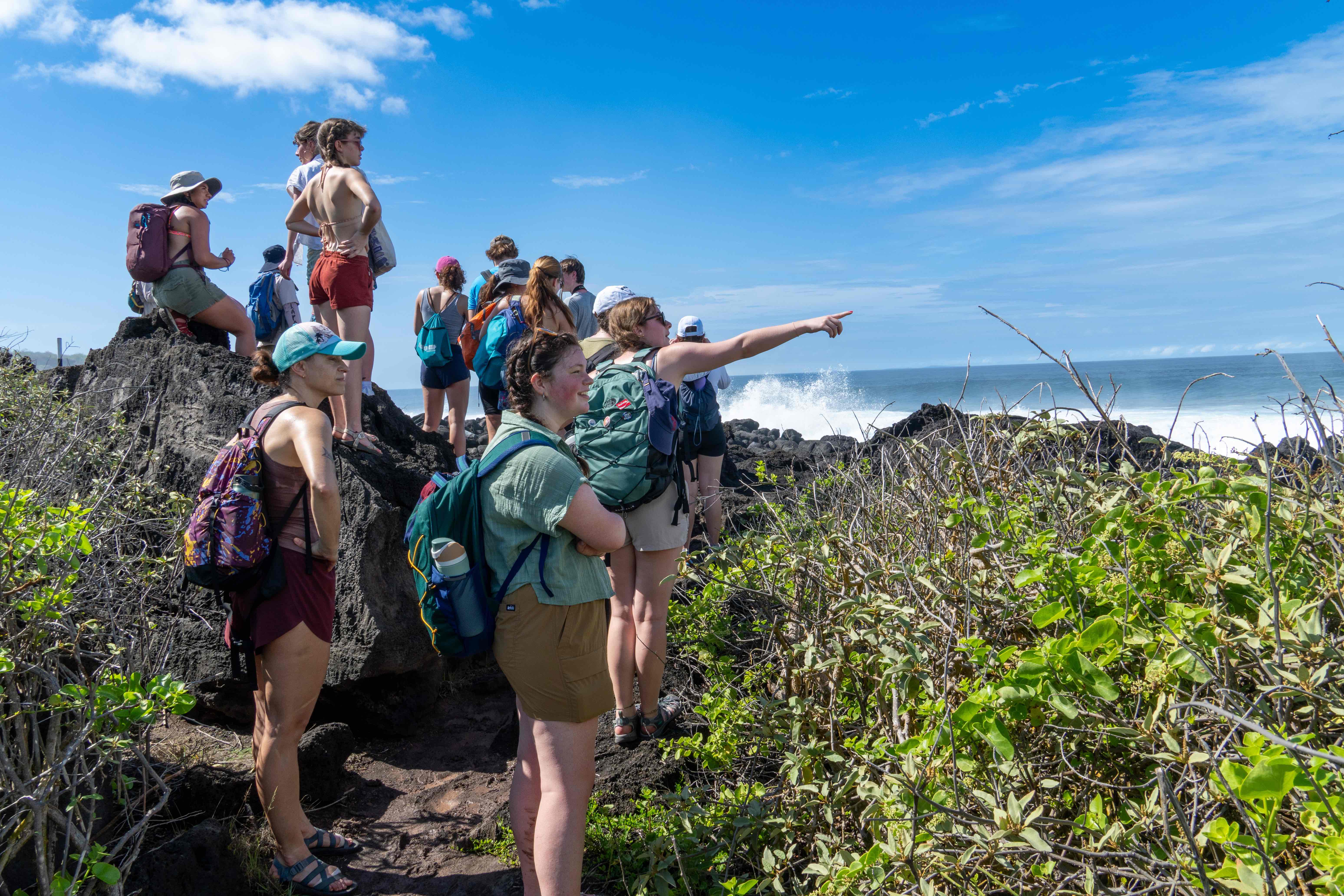
Iris Levin, associate professor of biology and environmental studies, conducted graduate research in the Galápagos Islands. One of the everyday highlights of the trip for her was “seeing my students fall in love with a place that is really meaningful to me.” In addition to identifying insects, reptiles, birds and sea creatures they had studied prior to the trip, it was important for Levin that the students got a chance to meet with local people and begin to understand the complex interactions between humanity and nature on the islands.
The class spent time learning about sustainable agriculture and restoration on a farm in the highlands of San Cristóbal; went snorkeling nearly every day among sea turtles and Galápagos fish; hiked over lava boulders up to cliffs to spot seabirds and marine iguanas; visited a giant tortoise sanctuary and learned about captive breeding and reintroduction programs; met with an artist who makes art out of plastic waste and cardboard and made their own art; and ended the trip by snorkeling at the famous Kicker Rock where students saw hammerhead sharks, eagle rays, tropical fish and more.
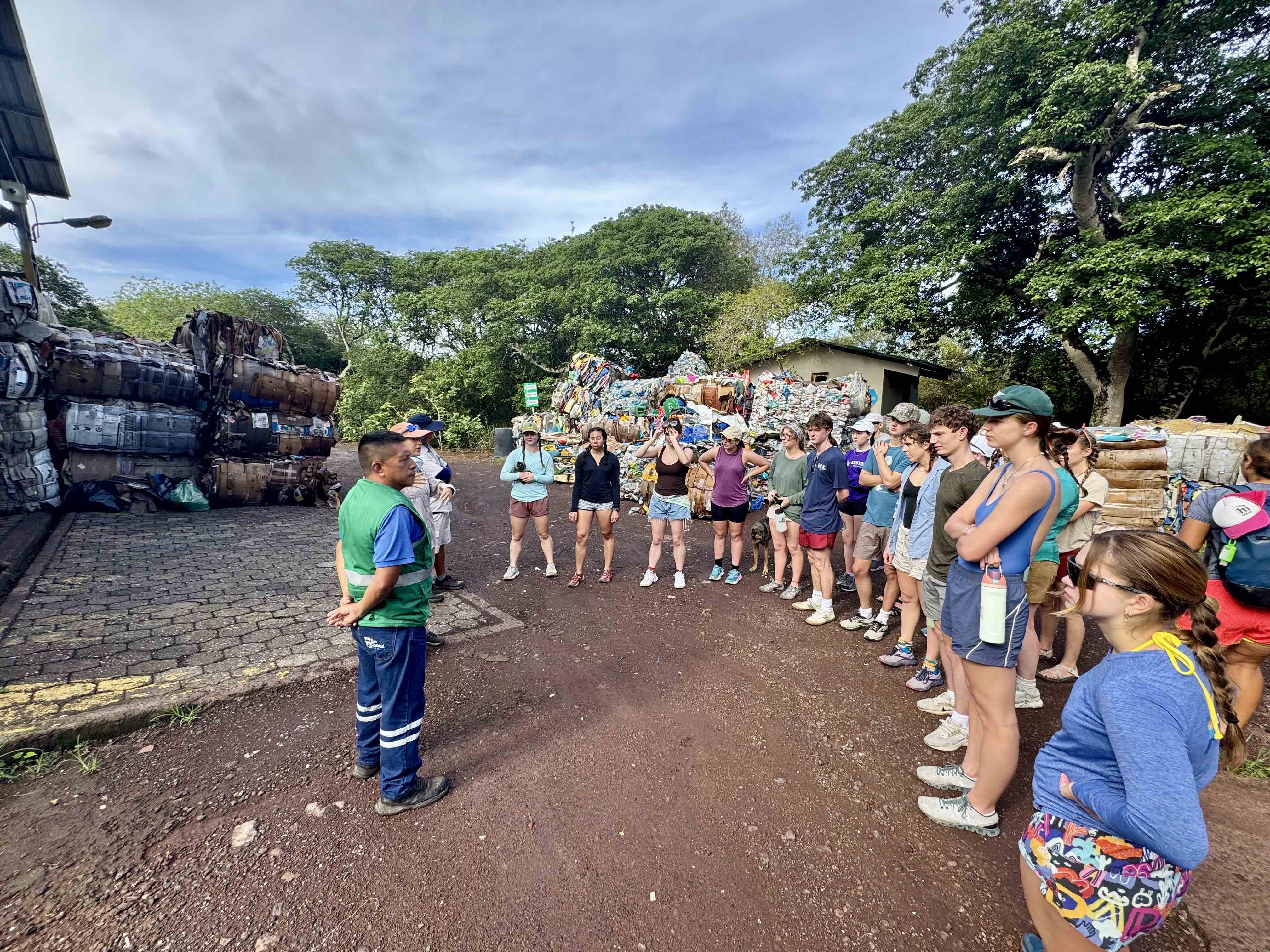
While the students relished seeing so many of the organisms they had studied during the first half of the semester, for a number of them, the most important takeaway from the trip was gaining a more nuanced understanding of the complex interplay between the competing needs of tourism and conservation and how the people on the island are finding ways to solve complicated ecological problems with sometimes the simplest of solutions. In considering the community response to the endemic challenges of living on such an island, Nina Nicoletti ’28 reflected: “Everyone’s on board. They’re solving problems. And I think in the world we’re in now, it’s really good to have that hope.”
Zoë Kontes, NEH Distinguished Teaching Professor of Classics, jumped at the opportunity to rework her syllabus with a trip to Greece nestled in the middle of the semester. To her mind, nothing can compare to seeing the material culture in person in the place where it was crafted. During a visit to the National Archaeological Museum, she was thrilled to see “the students, in that very first room, immediately their reaction is, ‘Whoa, this is so much bigger than I thought.’ And there’s just no way of expressing that in a slide.”
Other highlights of the class included traveling by ferry to the nearby island of Aegina, an overnight trip with site visits to Corinth, Nemea, Epidauros and Mycenae, and a full day at the Acropolis and the Acropolis Museum studying both the art and architecture of the ancient Greeks and the complicated history of cultural patrimony and restitution.
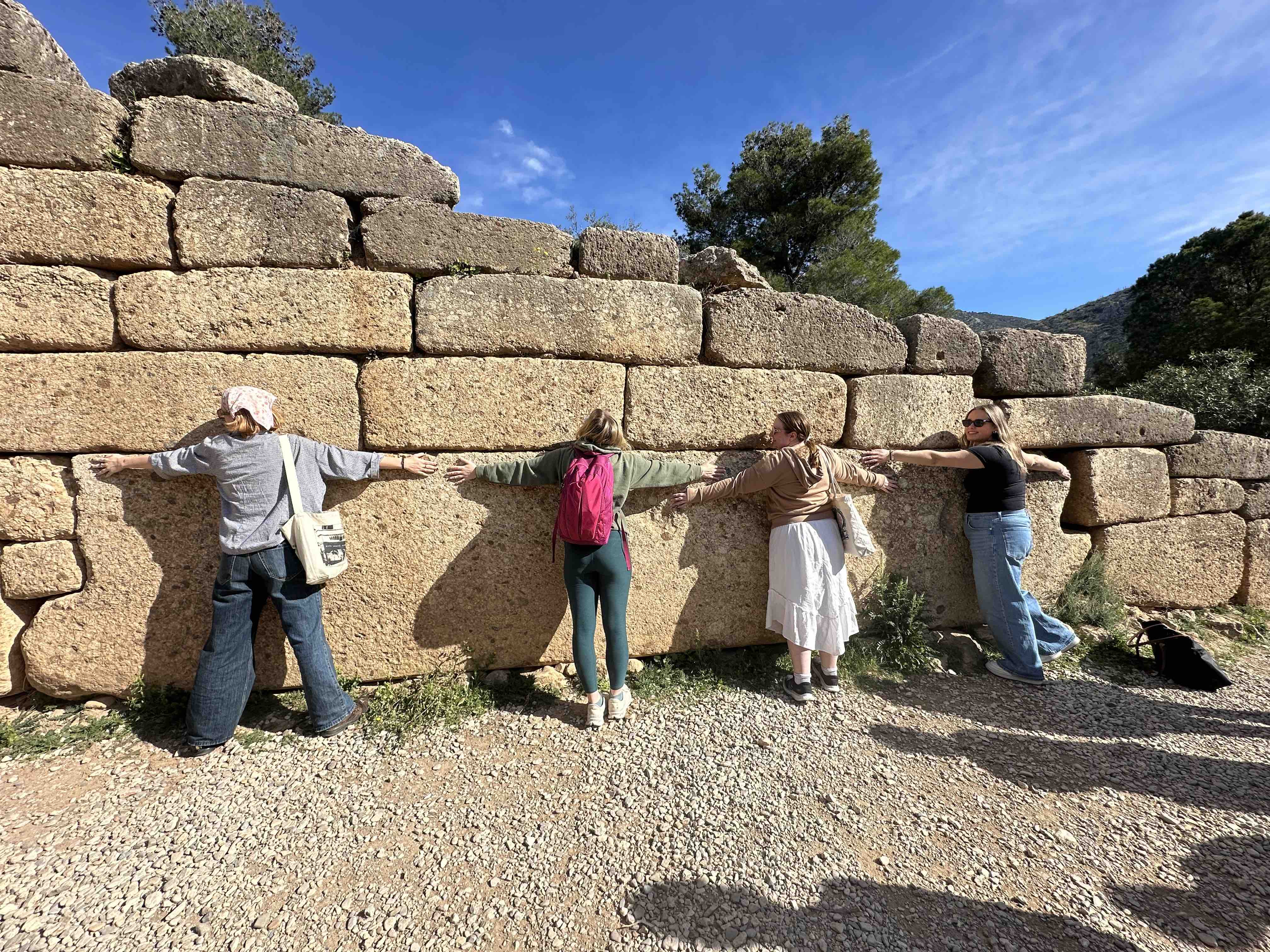
In addition to marveling over the scale of the sculptures, temples, tombs and pots that they had only previously seen in their textbook and slides, the students found themselves immersed in the challenges and delights of living abroad in shared apartments in a new city with a different language (and alphabet). Madie Malbasa ’28, who just declared a classics major, appreciated the opportunity for growth: “I think that having a kind of semi-independent experience where we had our own apartments and we had to figure out what we were going to eat every day, it forced us to make decisions which we definitely got better at by the end.”
Every year, nearly half of Kenyon’s junior class participates in an off-campus learning opportunity. Provost Jeff Bowman thinks that integrating these fully-funded, travel-embedded courses in the curriculum is another avenue for students to develop “a global sense of engagement and a global imagination.”
Students had a variety of responses to the experience. Some were even more motivated to go abroad in their junior year than they had originally been, but others like art history major and classics minor Sacha Franjola ’26, who plans to attend law school and didn’t think she could commit to a full semester abroad, found the trip to Greece allowed her to “get more of a sense of the global scale of what I’m learning and the global impact and have a chance to travel and work off-campus without necessarily having to sacrifice the things that I have going on here.”
One of the benefits of a mid-semester trip for “Greek Archaeology” is the added context students now have for the rest of the semester’s coursework. For Claire Clifford-Langenek ’26, an anthropology major, the perspective gained from being on the ground is invaluable: “I feel like I’ve been able to pick up concepts from the classroom a bit better now that I’ve been there because a lot of the class deals with memorization, but I feel like that can only go so far if you don’t have a mental image to work off of. So now that I do, I feel like even beyond this, it’s just going to help my own critical thinking in and outside the classroom.”
The Galápagos students are coming back to campus with a newfound understanding of how global issues are being solved on the islands. They will spend a good deal of the second half of the semester uniting the global and the local by investigating the impact of the feral cat population on the Gambier community (feral cats kill untold numbers of birds and small animals in both the Galápagos and Gambier each year) and will culminate by making a report to the Village Council with recommendations for potential courses of action.
For Amelia Russell ’28, an aspiring biochemistry major who had never been on an airplane before the trip to the Galápagos, “being able to apply the knowledge not only from the trip and just previous coursework, but actually being able to make an impact where we live now at Kenyon, I think is going to be really huge.”
